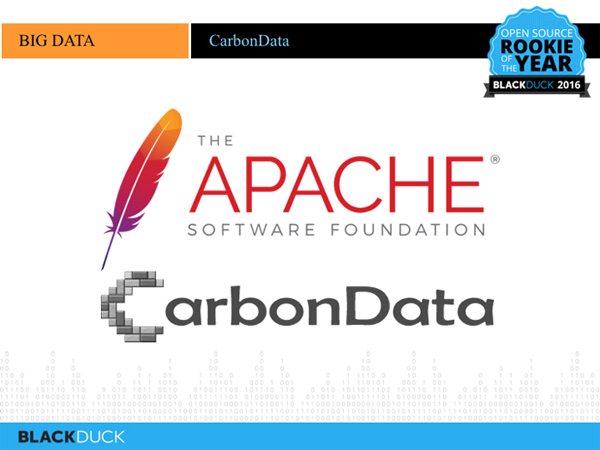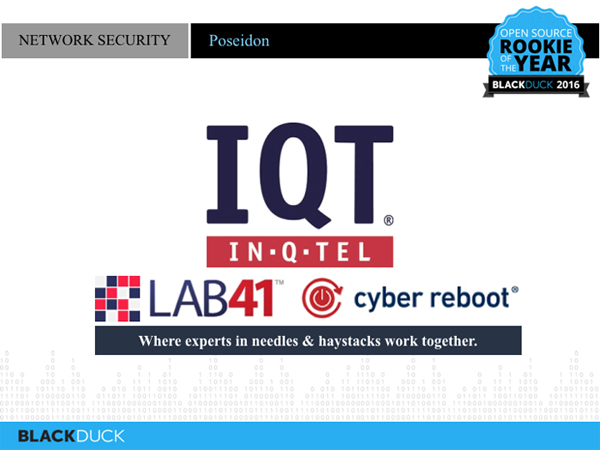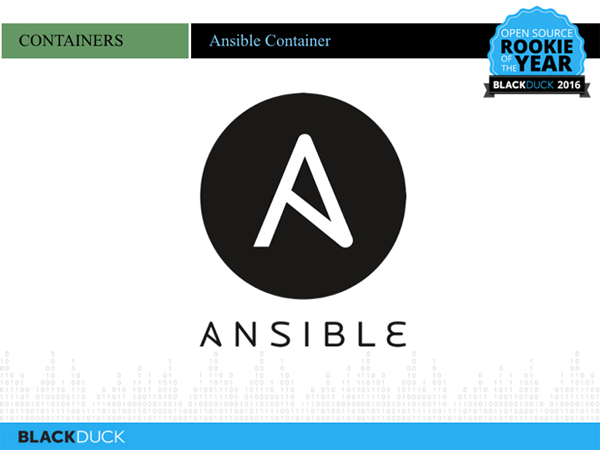| guide | For nine years, the Black Duck Annual Open Source Awards have been dedicated to discovering the most innovative and influential open source projects that have emerged in the past year. Although the camp of open source projects has been changing rapidly, the Newcomer of the Year Award has been providing important references for industry trends. Below, we get to know each of this year's award-winning newcomers! |
For nine years, the Black Duck Annual Open Source Awards have been dedicated to discovering the most innovative and influential open source projects that have emerged in the past year. Although the camp of open source projects has been changing rapidly, the Newcomer of the Year Award has been providing important references for industry trends.
In the past year, many technical fields have been extremely active, and the most noteworthy one is undoubtedly blockchain technology-it has surpassed virtual currency and started to play a role on more levels. Machine learning—including deep learning and neural networks—is also moving beyond intelligence into financial services and even design and manufacturing.
Big data, software-defined networking (SDN for short), container management and security are also hot areas. Below, we get to know each of this year's award-winning newcomers!
1.Sawtooth Lake
Sawtooth Lake is a new distributed ledger platform developed by Intel Corporation for the Hyperledger project, which aims to solve the scalability and security issues in existing blockchain technology. It provides a modular solution with a tamper-proof consensus algorithm that can be used to randomly select a leader, declare new blocks based on a proof-of-time mechanism (which requires far less computing resources than Bitcoin's proof-of-work), and can significantly improve transaction security. Sawtooth Lake can establish transaction sequences for specific domains to meet various applications, and use the domain definition rules to constrain related transactions. This is an important step forward in bringing blockchain technology to a wide range of business applications.

2.Carbon Data
Apache CarbonData is a fully indexed columnar Hadoop local data store that can be integrated with Spark for query optimization. It takes a unique approach to data organization, multi-level indexing, and optimization methods, resulting in faster data filtering, compression, and more powerful search and query processing capabilities, while more efficient use of computing resources. The dictionary encoding mechanism allows the user to complete the aggregation faster and "lazy decoding" after the aggregation is complete. CarbonData also supports many different data access modes through a single file format, including OLAP query, sequential access (large scan) and random access (narrow scan).

3.Deep Scalable Sparse Tensor Network Engine (简称DSSTNE)
Amazon's DSSTNE -- pronounced "destiny" -- revolutionized the neural network environment by optimizing for data sparsity and scalability, while focusing on optimizing multi-GPU configurations. Inspired by Amazon's product requirements for large-scale and low-latency computing capabilities, DSSTNE is designed to support large networks, sparse datasets, and parallel training. Amazon claims that DSSTNE is two to fifteen times faster than Google TensorFlow when processing sparse datasets. At present, DSSTNE is still focusing on playing a large-scale sparse data deep learning framework and becoming an ideal engine option for e-commerce and enterprise users.

4.OpenCORD
Open Networking Labs—a nonprofit organization responsible for unlocking the full potential of software-defined networking—developed OpenCORD as an end-to-end solution for combining SDN, NFV, and cloud with commodity infrastructure for Service Provider Networks provide data center-level scale and agility capabilities. OpenCORD is suitable for telecom central office and access, home and even enterprise environments. It adopts the public infrastructure of open building components to reduce capital investment and operating expenses, and uses the programmability and flexibility of the network to shorten the product launch cycle. Currently, OpenCORD users include AT&T, Korea Telecom, China Unicom, and NTT. It also cooperates with the Open Network Foundation to further promote the development of network solutions through open source software and software-defined standards.

5.Poseidon
This year, two organizations are working to improve cybersecurity using cutting-edge machine learning and software-defined networking capabilities. With the support of the In-Q-Tel (IQT) Technology Acceleration Institute and close cooperation with the US government, academia and the US intelligence community, Lab41 and CyberReboot successfully created the Poseidon project. Poseidon exists to address two key questions - what is on your network and what is it doing? Poseidon provides contextual awareness of items and traffic being added or removed from the network. It uses machine learning to examine interactions on the network and learns to track down and block clues related to malicious activity. In preliminary tests, Poseidon achieved an 84 percent detection rate of malicious activity and only 2.2 percent false positives.

6. Trireme
Trireme is responsible for answering an urgent question: How to harden the Linux environment to ensure that containers can run efficiently and securely? Through continuous exploration of SDN and integration of security policies, scale and remedial measures, cloud security vendor Aporeto launched the Trireme project ——This is a cloud-native security solution for distributed applications. It enables the establishment of large-scale security policies through end-to-end authentication and authorization mechanisms. Aporeto also chooses to work closely with Kubernetes, and uses the latter's flexible network policy framework, fast-growing technical community, and focus on cloud-native applications and scale issues to help the development of the Trireme project.

7.Ansible Container
Ansible Container is an alternative solution created by the Ansible development team for Docker files. It can automate container construction, deployment, and management, and the entire process only needs to rely on Ansible Playbooks. Ansible Containers is a platform-neutral solution that works with most common container orchestration engines, including Kubernetes and OpenShift. Its modularity allows you to target Docker and Kubernetes respectively during development and deployment, and the configuration process is very simple. Since it was revealed at the DockerCon conference in the summer of 2016, the project has gained considerable attention and community development response. In 2017, Ansible Container is about to launch version 1.0, and the focus will be on extending related services to more use cases and roles.

8. Hummingbird
Learning Equality has been using its Kolibri application to provide online education services to low-resource areas of the world on a non-profit basis. Although not yet available for public download, Kolibri has indeed begun to provide learning resources to students and teachers in areas with limited educational resources. Kolibri offers interactive practice solutions, self-pacing mechanisms, and collaborative learning tools that provide real-time feedback and guidance to students and teachers. Kolibri's "seed" terminal device can share and update content between different devices through an offline local network. Additionally, Kolibri compresses content with minimal loss of quality, enabling smooth delivery of large volumes of content on small, low-cost devices.
